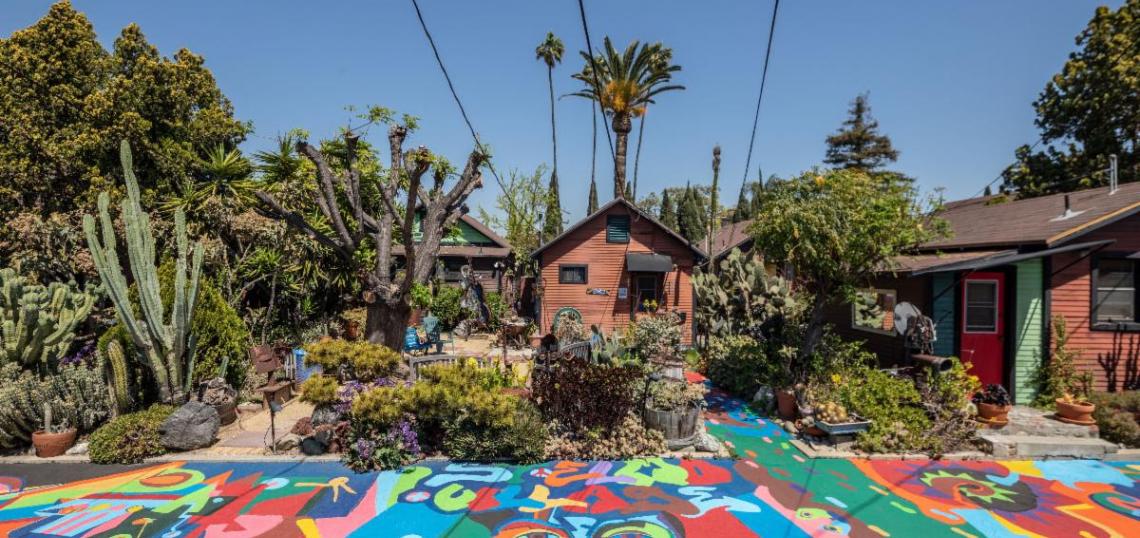News and bits
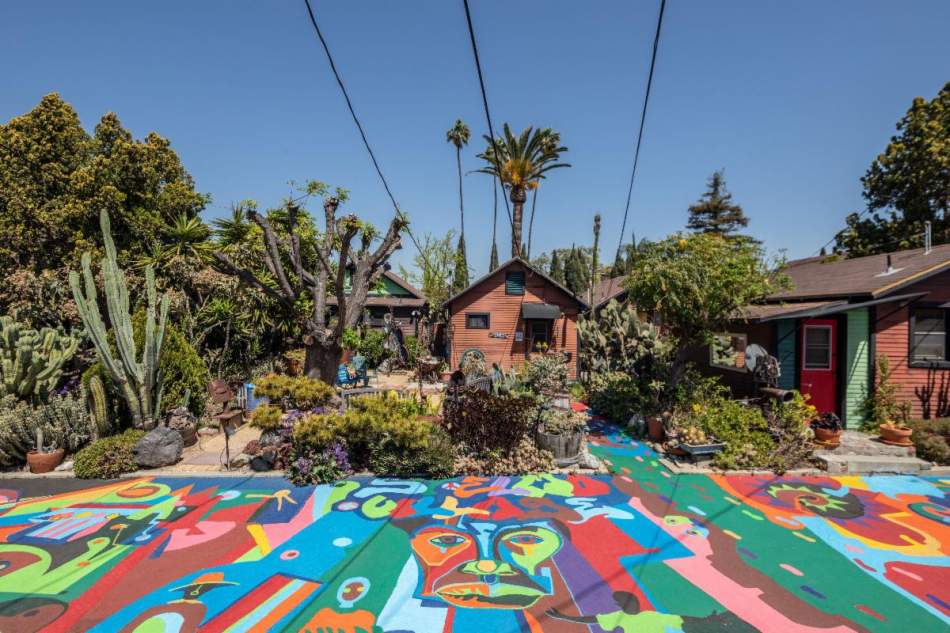 St. Elmo Village, an artists’ enclave occupying a compound of ten small Craftsman bungalows in a colorful garden setting, was founded in 1969 by artists Roderick and Rozell Sykes as a place where children and adults could explore their creativity. Since then, St. Elmo’s—incorporated as a nonprofit in 1971—has hosted art workshops, festivals, and other programs to benefit the community and engage local youth.Elizabeth Daniels, © J. Paul Getty Trust.
St. Elmo Village, an artists’ enclave occupying a compound of ten small Craftsman bungalows in a colorful garden setting, was founded in 1969 by artists Roderick and Rozell Sykes as a place where children and adults could explore their creativity. Since then, St. Elmo’s—incorporated as a nonprofit in 1971—has hosted art workshops, festivals, and other programs to benefit the community and engage local youth.Elizabeth Daniels, © J. Paul Getty Trust.
Getty and the Los Angeles Department of City Planning are teaming up on an initiative to recognize sites of importance to African American heritage across the city.
Over the coming next three years, the Los Angeles African American Historic Places Project, which is led by the Getty Conservation Institute and the Planning Department's Office of Historic Resources, to identify and preserve local landmarks linked to African American heritage.
“Historic preservation is about the acknowledgment and elevation of places and stories. The point of this work is to make sure that the stories and places of African Americans in Los Angeles are more present and complete than previously,” says Tim Whalen, the John E. and Louise Bryson Director at the Getty Conservation Institute, in a prepared statement. “The work is also about making sure that preservation methods are examined for systemic bias. It’s ultimately about equity.”
In addition to flagging new historic landmarks, the project will also explore how current planning and preservation processes may reinforce systemic racism, and identify ways to create a more inclusive system. Likewise, Getty and the Planning Department intend to go beyond physical preservation and develop cultural preservation strategies for historically Black communities.
Getty and the Planning Department have their work cut out for them. To date, just over 3 percent of the city’s roughly 1,200 designated local landmarks are connected to African American heritage.
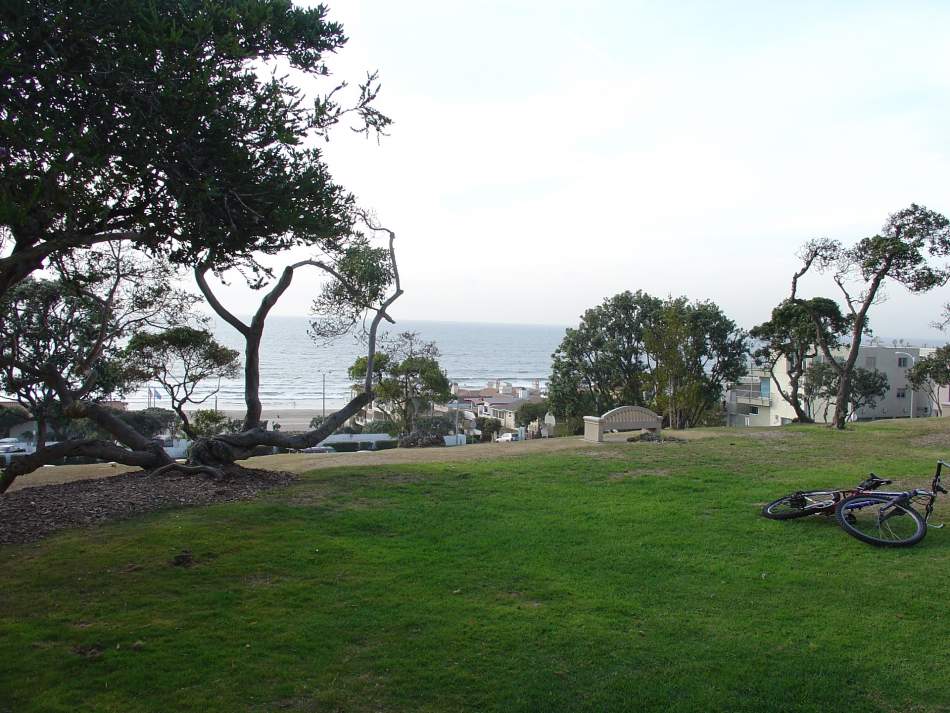 View of Bruce's BeachWikimedia Commons
View of Bruce's BeachWikimedia Commons
In 1912, Willa and Charles Bruce paid $1,225 to purchase beachfront land in Manhattan Beach to create a resort for Black residents. Visitors were subject to racist harassment by neighboring residents, and even the KKK. Years of threats culminated in 1924, the Manhattan Beach City Council moved to claim the property via eminent domain, with the stated goal of building a park. However, after taking control of the land in 1929, the city left it vacant.
Decades later, a group of local and state officials are pushing a new law which would return ownership of the property to descendents of Willa and Charles Bruce.
The new legislation, authored by State legislators Steven Bradford, Al Muratsuchi, and Ben Allen, would permit Los Angeles County to transfer ownership of the beach property - now valued at roughly $75 million - back to the Bruce family.
Under the proposed arrangement, the Bruce family could lease the land back to the County, which would then pay rent for continued use of Bruce's beach. The land is currently the site of the Los Angeles County Lifeguard Training Headquarters.
“The Bruce family had their California dream stolen from them. This was an injustice inflicted upon not just Willa and Charles Bruce– but generations of their descendants who almost certainly would have been millionaires if they had been able to keep this property and their successful business,” said Los Angeles County Supervisor Janice Hahn, who is among the local elected officials leading the effort. “I strongly believe the right thing to do is for the County to return this property to the Bruce family.”
The state legislation contains an urgency clause which would allow it to take effect immediately after it is signed by Governor Newsom. At the local level, Hahn and Supervisor Holly Mitchell have announced their intent to introduce a motion at the April 20 meeting of the Board of Supervisors to plot out next steps for the County.
On Monday, April 12 at 3:00 pm, Westside Urban Forum and Jerde will host a conversation with Congressman Ted Lieu about how the business community can counter anti-Asian racism. If you'd like to attend this free online event, which will be moderated by yours truly, register here.
Things to read from the past week
Landlords are waiting for rent payments — and some can’t hold on much longer "The pandemic’s worst effects have been felt most by those who earn less — a demographic more likely to be renters, as well as people of color. Its jolt to livelihoods has been clear in data on lost jobs and the millions of Americans newly receiving food aid, among other indicators. Researchers have also documented well the rising debts that tenants owe their landlords — missed rent must eventually be paid back — and the long-term financial consequences for those renters." (LA Times)
New artwork inside Mariachi Plaza Station by artist Sonia Romero "Artist Sonia Romero painted the mural, 'Hecho a Mano,' on 700 square feet of aluminum panels in her studio. The painted aluminum panels — 150 pounds each — were installed over several weeks." (The Source)
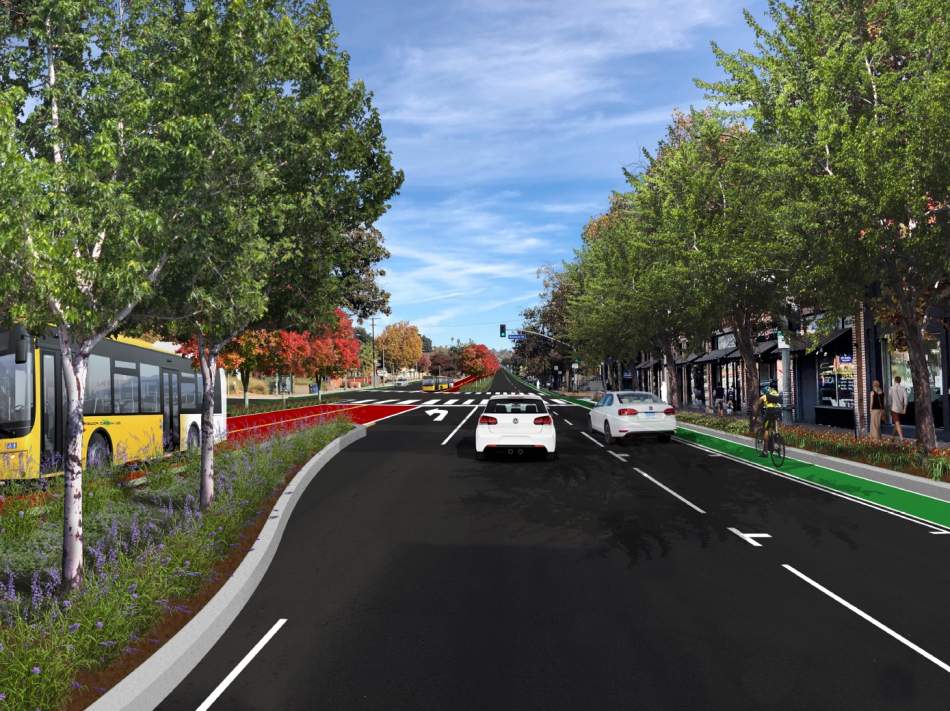 View of proposed bus-only lane on Eagle Rock BoulevardMetro
View of proposed bus-only lane on Eagle Rock BoulevardMetro
Eagle Rock’s Colorado Boulevard Could Get “Dining, Parking, Walking, Bikes, and a Big Fat Bus” "The revised NoHo-Pasadena BRT plans are scheduled to be presented to the Metro board in May. The board is expected to approve the project’s final Environmental Impact Report (EIR) this summer." (Streetsblog LA)
After almost a century, landmark Sears store in Boyle Heights will soon close "The store, whose green-lit logo is visible for miles at night, towering above a confluence of freeways on East Olympic Boulevard near the L.A. River, was one of the few surviving Sears outlets in the area." (LA Times)
The Enduring Fiction of Affordable Housing "The financing strategies of Affordable Housing constitute the government’s total effort to produce new housing specifically for those who can’t afford market rents. They account for billions in government expenditure and foregone tax revenue. Yet they’ve largely avoided public scrutiny. They seem to skate by on their imprecision, complexity, and branding—who would reject 'affordable' housing?—and have largely avoided public scrutiny." (New Republic)
Highway Foes Emboldened as Buttigieg Puts Houston Project on Pause "Now the national landscape of freeway fights is shifting, with activists, urbanists and researchers filling DOT inboxes with requests for similar action against road projects from coast to coast. Biden’s $2 trillion infrastructure plan, which includes $20 billion to 'redress historic inequities and build the future of transportation infrastructure,' is further encouraging highway foes that a new chapter in the story of U.S. road building has begun." (CityLab)
California aims to fully reopen its economy June 15 "Officials emphasize the move hinges on two factors: a sufficient vaccine supply and stable and low hospitalization numbers....There also will not be a full return to pre-pandemic life. Notably, California’s mask mandate will remain in place." (LA Times)
Post-COVID Metro Transit Ridership Recovering, While Service Lags "Now, with vaccinations in full swing and cases continuing to decline, ridership is again rebounding; March ridership was again nearly 600,000 – about half of pre-pandemic levels." (Streetsblog LA)
Review: Mean Streets ‘Underneath the Freeways of Los Angeles’ "Los Angeles has its own history — of dreams, disaster and displacement — and a talent for paving over it.’Underneath the Freeways of Los Angeles,' an immersive show from the Echo Theater Company, summons a particular incident: the construction of the East Los Angeles Interchange, perhaps the busiest freeway interchange in North America. To build it, the city razed portions of Boyle Heights, a multicultural enclave. In an infrastructure decision that would shatter any Jane Jacobs fan, urban planners ran a particular stretch of freeway above and through the lagoon of Hollenbeck Park." (New York Times)
Sick of loud noises and bright lights? Sorry, L.A. has always been like that "Today, Los Angeles fills your ears and eyes with noise and light, the rush and whoosh of cars and buses and trains, the pinging and ringing of millions of phones, the music that’s not to your liking leaking from other people’s earbuds, and the perpetual glimmer and glare from headlamps and streetlamps and storefronts. And oh, are you ever wistful for the years of yore, for a Los Angeles that surely cherished civilized silences and decent darkness. Boy, have you got the wrong place." (LA Times)
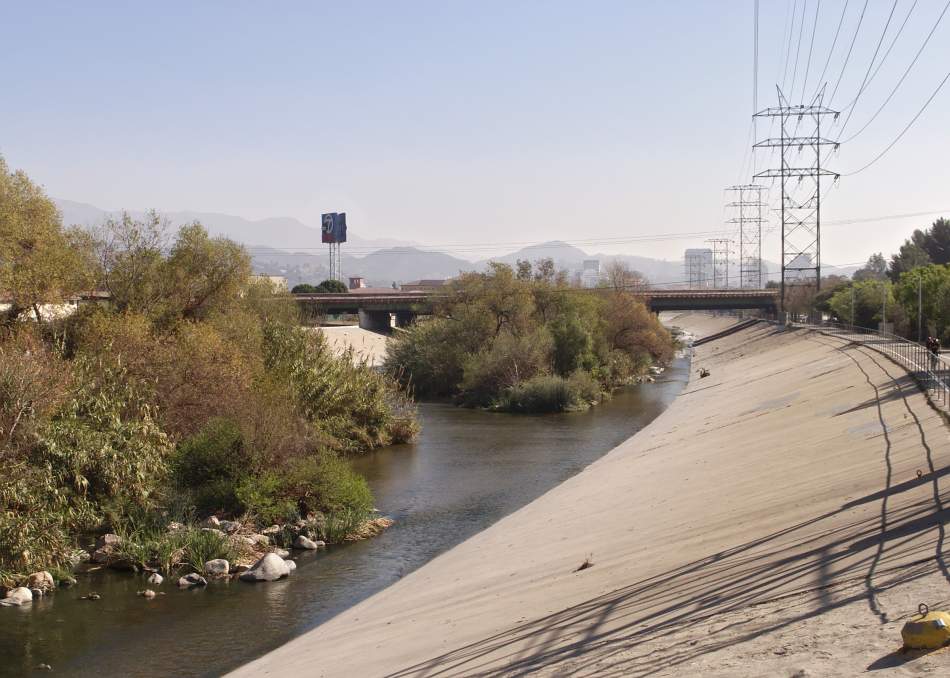 The Los Angeles RiverWikimedia Commons
The Los Angeles RiverWikimedia Commons
Endangered trout may soon return to the concrete Los Angeles River "Hemmed in by towering concrete floodwalls, the urban river courses nearly 49 miles through Los Angeles County, from its headwaters in the Simi Hills and Santa Susana Mountains to its mouth in Long Beach. The river was left in a relatively natural state until 1938, when a disastrous flood breached its banks, killing 115 people and destroying 5,000 homes. Pressure quickly built on both the city and the federal government to take drastic action to contain the river. Although this radical transformation protected human life and property, it also diminished a diverse riparian ecosystem that hosted spawning grounds for various aquatic species, including the southern California steelhead trout, which is now federally endangered. These days, the much-reduced river supports only the hardiest of species, most of them non-native, such as sunfish and carp. But now, following decades of public frustration about the river’s poor condition, the city—in coordination with the state and federal agencies—has mobilized to restore the waterway and its habitats." (National Geographic)
Anti-Pedestrianism & Echo Park Los Angeles is starved of public space. "While there are some large parks or other areal public spaces, most of our public space is linear: our sidewalks and roads. It makes sense therefore that people would encamp in the spaces they most often encamp in: public rights of way, including sidewalks, underpasses, and highway frontages; and our areal open space, including parks, undeveloped open space, and water channels and basins. Public spaces, whether areal or linear, need negotiation and tolerance to be truly free and open. The mere presence of the unhoused is not the antipode of safety and security as some would have it; a state of affairs that must be eradicated. Rather, unhoused encampments are a result of our society, government, and economy forcing people into one of the most rational choices they can make under dire circumstances, to band together. These communities then become stakeholders in a public space like any other--stakeholders who should be acting, and treated, on equal terms for the maintenance and flourishing of all." (Los Angeles Walks)
The next Aliso Canyon could happen on L.A.'s Westside "The Playa del Rey facility is significantly smaller than Aliso. But by some measures, it poses a far greater threat. Many more people live within a few miles of Playa than Aliso, meaning the health and economic consequences of a major blowout could be worse. The Westside storage field has older wells. And like Aliso, it has a long history of leaks." (LA Times)
Column: It’s time to start thinking about roads and taxes like adults "Whenever a discussion about raising the gas tax is brought up, some form of 'now is not the right time' is uttered. Well, the fund we use to maintain roads and mass transit is already on life support. Infrastructure is a public good, and even citizens who hate taxes need to recognize it’s time to pay up." (LA Times)
Citing high wildfire risk, judge halts construction of massive Tejon Ranch development The ruling delays the proposed project, which would construct 19,300 on 6,700 acres of land near Los Angeles County's border with Kern County (LA Times)
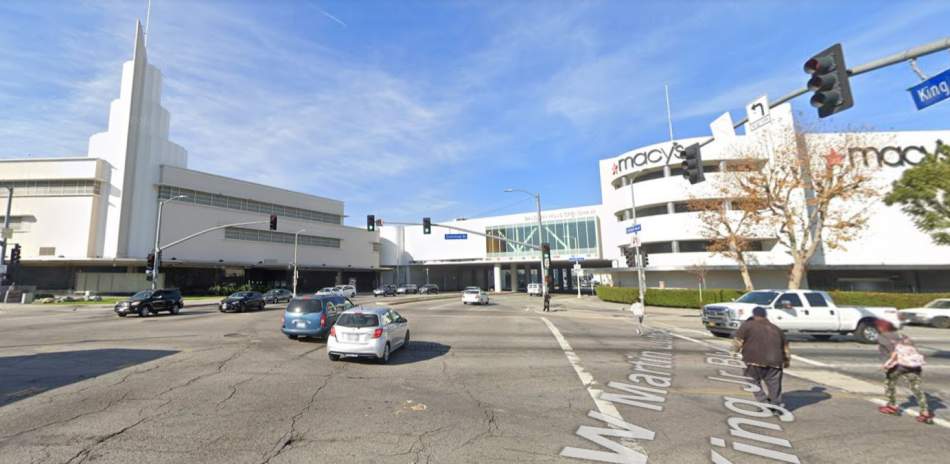
LA Mall Purchase Would Be the Biggest Victory Yet for Community-Driven Development "The Baldwin Hills-Crenshaw Plaza mall is 41 acres of prime commercial real estate in the nation’s second largest metropolitan area. When the mall came up for sale last year, a group of residents decided to shoot for the moon and started organizing to buy it, at a price tag now in the nine figures...If their bid is successful, the residents envision bringing in more locally owned businesses — with a preference for worker-owned cooperatives; adding new mixed-income housing; building a recording studio; and creating new green space on the lot." (Next City)
Metro to increase service on select bus lines starting April 12 Additional trips will be added to the following Metro Bus lines: 2, 4, 10, 14, 16, 18, 20, 28, 30, 33, 40, 51, 53, 60, 66, 78, 81, 108, 180, 200, 204, 207, 232, 251, 260, 534, 704, 720, 733, 754. (The Source)
Stephanie Wiggins appointed as CEO of L.A. Metro, making her 1st woman to head the agency "Wiggins, the CEO of Metrolink, will succeed Chief Executive Phil Washington, who announced Feb. 3 that he was stepping down after a six-year tenure that helped build the framework for an ambitious expansion of the local rail network. Wiggins’ position was affirmed by the Los Angeles County Metropolitan Transportation Authority’s board of directors." (KTLA)




